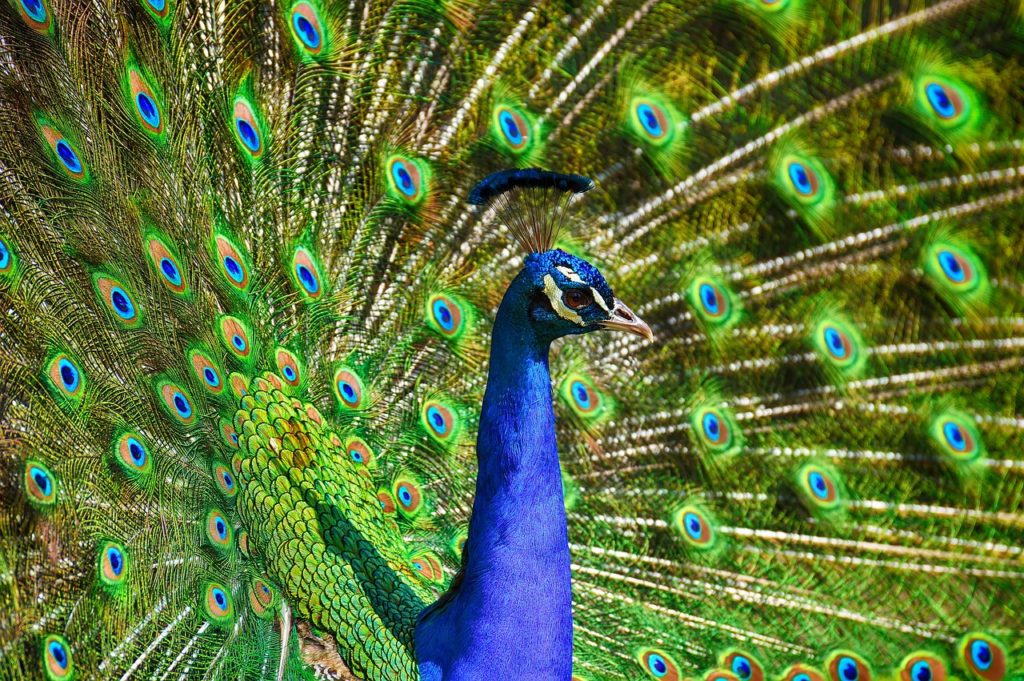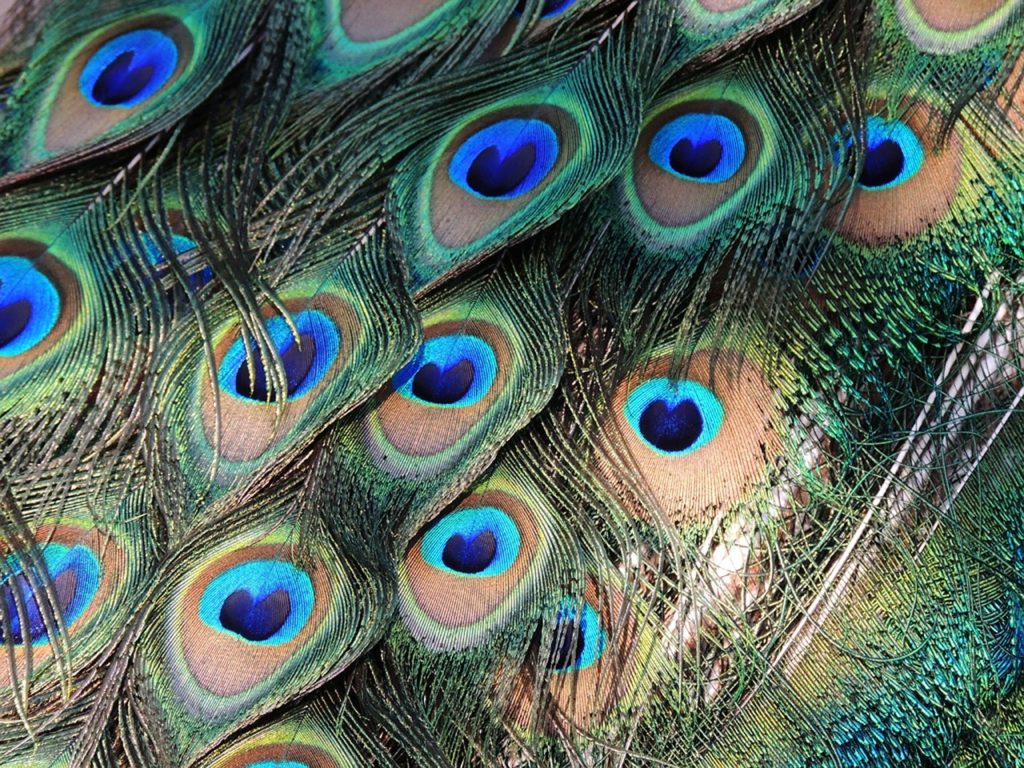We use affiliate links to run our site. When you buy through links on our site, we may earn an affiliate commission, without any added cost to you. Learn more
Peacock is a very attractive bird. And the best part of its attractiveness is its feathers. Peacock feathers are truly a natural wonder that has captured the hearts and imaginations of people all over the world.
These magnificent plumes are exclusive to male peafowl, with their vibrant colors and intricate patterns used to attract mates and display dominance.
But there is so much more to peacock feathers than meets the eye. From their regenerative abilities to their superstitions and cultural significance, there are a plethora of interesting facts that make peacock feathers a topic worth exploring.
In this post, we’ll dive into five fascinating facts about peacock feathers that will leave you in awe of nature’s beauty and complexity. So sit back, relax, and get ready to discover the wonders of one of nature’s most spectacular plumages!
5 Interesting Facts About Peacock Feathers
Here are 5 interesting things that you probably don’t know about peacock feathers.
1. Peacock feathers are actually modified scales.
They are made of keratin, the same protein that makes up our hair and nails. Peacock feathers grow from follicles in the skin, just like our hair does. Each feather has a hollow shaft called a rachis, and branches called barbs and barbules that form intricate patterns and colors.
2. Peacock feathers can change color depending on the angle of light.
This is because they have microscopic structures called melanin rods and keratin crystals that reflect different wavelengths of light. When the light hits the feather at different angles, it creates an optical phenomenon called iridescence, which gives the feather a shimmering effect.
3. Peacock feathers are used for courtship and communication.
Male peacocks, or peacocks, have a large fan-shaped tail called a train, which they can spread out to display their feathers to attract females or peahens.
The train can have up to 200 feathers, each with an eye-like spot called an ocellus. The ocelli are thought to mimic predators or prey and can signal the peacock’s health and fitness to potential mates.
4. Peacock feathers have inspired many cultures and religions.
Peacock feathers have been used as symbols of royalty, beauty, immortality, wisdom, and spirituality in various cultures and religions around the world.
For example, in Hinduism, the peacock is associated with the god Vishnu, who is said to have a thousand eyes on his body, represented by the ocelli on the peacock feathers.
In Buddhism, the peacock is a symbol of compassion and openness, as it can eat poisonous plants without being harmed. In ancient Greece and Rome, the peacock was sacred to the goddess Hera or Juno, who gave it its eyes as a gift.
5. Peacock feathers have many uses and benefits.
Peacock feathers have been used for decoration, fashion, art, medicine, and more throughout history and today. Peacock feathers can add color and elegance to any home or outfit.
They can also be used to make jewelry, accessories, crafts, and even musical instruments.
Peacock feathers have also been used for healing purposes in traditional medicine, as they are believed to have antibacterial and antifungal properties.
Which Peacock Has Feathers:
Both peacocks and peafowl have feathers. But there is a basic difference.
One of the main visual differences between male and female peacocks is the color of their feathers. A male peacock typically has an opalescent shade of vibrant blue to their feathers.
Females, on the other hand, have shades of grey, cream, and brown.
Male peacocks have long tail feathers with eyespots also known as ornamental ocellus. These 200 covert feathers run along the top of the back to cover the base of the tail feathers. The actual tail feathers are brown and much smaller than the covert feathers.
Sometimes, males also have scale-like feathers on their backs adjacent to the covert feathers.
Although female peacocks have scale-like feathers on their necks, they don’t have colorful tail feathers like male peacocks. The feathers on their backs are brown or solid in color.
Although males are considerably more attractive for their colorful feathers, it’s far easier for female peacocks to use camouflage or avoid predators due to their subtle feather color.
When Peacocks Spread Their Feathers:

Peacocks spread their feathers as part of a courtship ritual to attract a mate. When a male wants to attract a female, he spreads out his tail feathers and displays the colors and eyespots fully for her to see. When it’s fully spread, the feathers make a full semicircle. behind the peacock.
Some researchers say that they not only display their tail feathers but also vibrate them at their natural resonating frequency — like a guitar string. source
The size and the patterns of the tail help the peafowl choose whether or not she’ll mate with him. Generally, the more eyespots and the bigger the tail, the better his chances are for procuring one or many mates.
Will Peacock Feathers Grow Back:
Peacocks often use their tail feathers to attract females. However, every year after the mating season they shed their train. This shedding process is a common part of most birds’ lives. It is called molting. Feathers can wear out and lose their functionality over time and so birds shed them.
This molting process in peacocks is the same as that of when snakes shed their skins. When the mating season comes peacocks will regrow their feathers longer and fuller.
Can Peacock Feathers Be Kept At Home:
The blue peacock is the national bird of India. But unlike the United States of America where you cannot keep the feather of the national bird, in India, you can keep the peacock feather only if the feathers are naturally shed.
Having said that, you cannot pluck the feathers from a peacock’s body, it is illegal and a punishable offense. Authorities can find out easily if the feathers are naturally shed or are plucked.
Are Peacock Feathers Bad Luck or Good Luck:
There is a difference of opinion about how the peacock’s feathers can influence luck.
Some, typically in the Western world, believe bringing peacock feathers to your house can bring bad luck. Due to this belief, peacock feathers are excluded from costumes and sceneries in theaters. Some believe that the eye present in plumes are evil and invade your privacy by spying.
On the other hand, in countries like India, China, or Japan people believe bringing peacock feathers to your house can increase your luck. And the eyes that are present in the feathers will increase security and protects the inhabitants from death and dangers.
Can Peacock Feathers Repel Lizards:
As peacock feed on lizards, Lizards are scared of peacocks. If you keep a peacock feather in your house, the smell of the peacock feather might scare away the lizards.
But the lizards will soon realize that there’s no peacock in the house, and they will start coming back.
How Peacock Feathers Are Collected:

For collecting peacock feathers you need to wait till their mating season is over. After the mating season, they shed their feathers naturally. They drop all of the feathers over the course of about a week, and it’s simple to pick them up off the ground.
It is illegal to pluck the feathers from a peacock’s body.
Final Thoughts:
Peacock feathers are truly remarkable and have been admired for centuries for their beauty and cultural significance. We hope that you have enjoyed learning these seven fascinating facts about peacock feathers, and perhaps even discovered something new.
If you found this post interesting, please consider sharing it with your friends and family. And if you’re hungry for more interesting articles on nature, animals, and the world around us, be sure to explore our website for more exciting content.
Amazon and the Amazon logo are trademarks of Amazon.com, Inc, or its affiliates.
